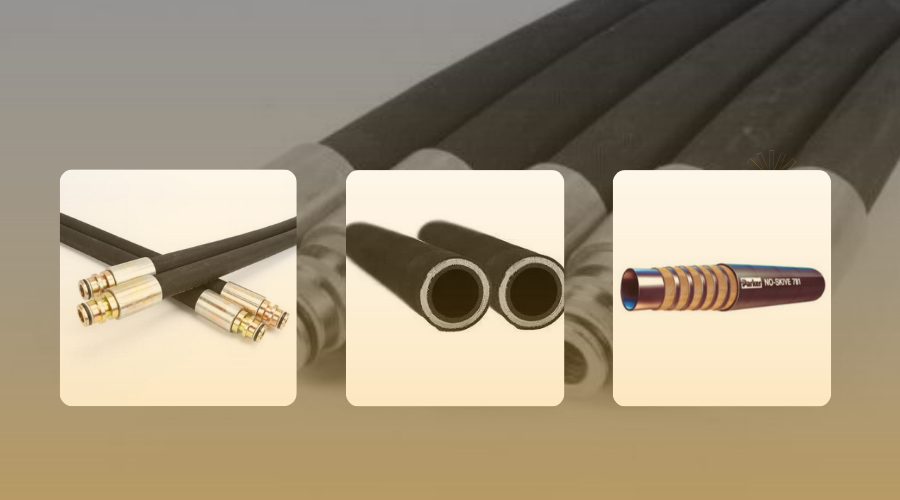

Hydraulic systems depend on hydraulic hoses because these components transfer both fluid and power through their systems. The maintenance of hydraulic hoses needs to be regular because it guarantees both peak performance and extended lifespan while preventing time-consuming breakdowns. The following post discusses essential rules along with proven practices for maintaining hydraulic hoses which helps your hydraulic systems achieve optimal performance.
It is important that hydraulic hoses are managed and routed in a proper manner to reduce bending, twisting or abrasion that is likely to lead to hose failure. Make certain that hoses are positioned so that they will not have excessive strain put on them, their clearance is sufficient and they do not come into contact with moving parts or other elements.
When connecting spiral hydraulic hoses ensure that you get the proper length of hose so that it can flex with the system but not stretched. There should be enough space or allowance for expansion to reduce pressure on the hose during operations.
Ensure that the hose connections and fittings are clean before installation to remove any dirt, contaminants etc. This assists in making a good seal and avoids cases where some unwanted material is introduced into the hydraulic system.
It is recommended that fittings and hoses provided by the manufacturer be assembled according to the manufacturer's guidelines. To attach fittings on hose ends properly, one must ensure that he or she uses the right tools and methods of crimping. Do not over-tighten since this will put pressure on the hose or the fittings and potentially harm them.
Use the appropriate sealing technique like the use of O-rings or thread sealants to avoid cases of leakage. Hose assembly protection should be made from abrasion, chafing or sharp edges or surfaces such as using covers, sleeves or clamps.
Hydraulic hoses must be provided with good support to reduce stress, vibration, and sagging. To prevent any movement in the hydraulic hoses, fix hydraulic hose clamps or brackets at proper intervals.
When using hydraulic hoses, always perform frequent checks to determine their condition, whether they are worn, damaged, or leaking. It is recommended that one schedule routine maintenance checks to detect any problems and sort them out before they become a big problem. Always replace hoses for potential failure hazards that may be associated with them.
Hydraulic hoses require cleanliness to avoid the build-up of abrasive dirt, debris, or any other contaminant that causes internal wear on the hoses. It is also recommended that you wash the exterior part of the furniture with a soft brush or cloth often to remove dirt on the surface.
Check the hose ends carefully as fittings and connections are found at these points. Check them for signs of wear, rust, and crack or any sign of leakage. If possible, then turn the fittings a little more but do not over tighten it as it will damage the hose and the fittings.
It is necessary to change the fittings that have got rusted or worn out to ensure that there will be no water leakages or accidents such as pipes detaching from the fittings.
Check the hose material compatibility with the hydraulic fluid. Hose failure occurs early due to fluid incompatibility which leads to hose deterioration or swelling. It is advisable to look at the manufacturer's instructions or speak to hydraulic engineers about the type of fluid that is appropriate for your hoses.
Hydraulic hose maintenance is essential to ensure that hydraulic systems work effectively and for a long time. Therefore, it is necessary to follow these basic rules and recommendations which will help to reduce the probability of hose failures, enhance the performance of your hydraulic system, and increase the service life of hydraulic hoses. Remain proactive and include a maintenance schedule in your operational plans so that operations run smoothly.
In hydraulic transmission in industrial, automotive, and hydraulic uses, hydra...
READ FULLManufacturers produce diverse item ranges through rubber molding, including es...
READ FULLRubber molding is a standard way to give rubber shape in the industry. At rubb...
READ FULL